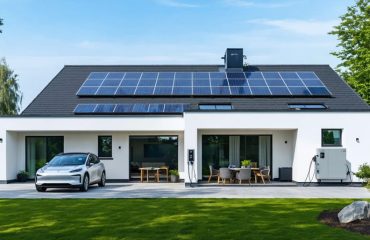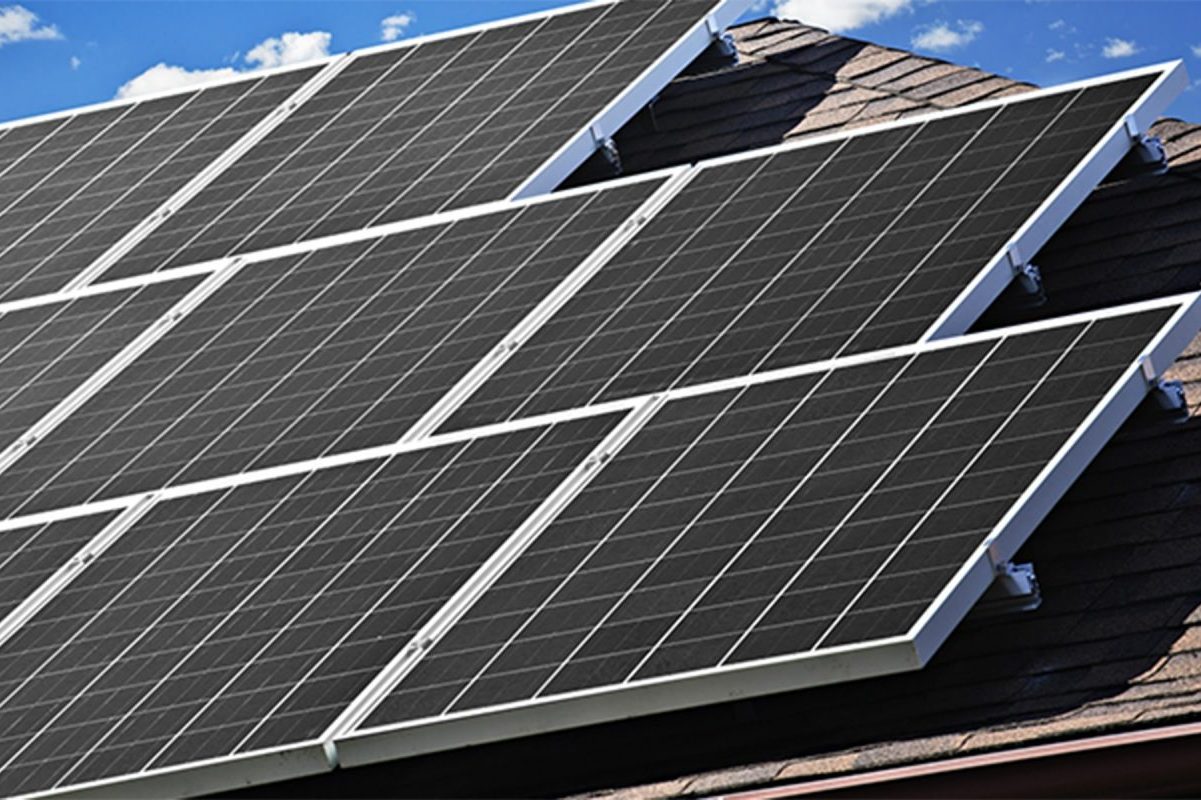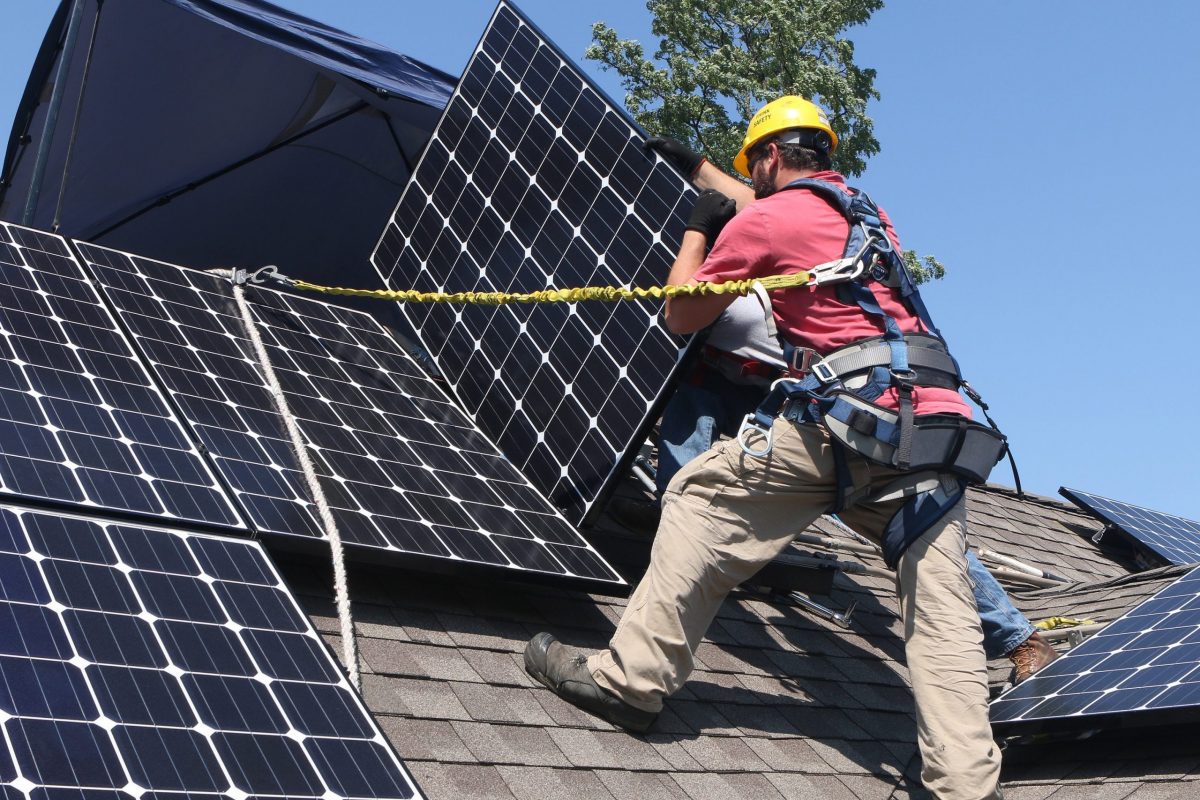A 5kW solar system transforms your home into a self-sustaining energy hub, powering the average household’s daily needs while slashing electricity bills by 60-90%. Perfect for homes consuming 350-850 kWh monthly, this mid-sized solar solution generates approximately 20-25 kWh per day, depending on your location and roof orientation. As energy costs continue rising, homeowners investing in 5kW systems typically recover their investment within 4-6 years while contributing to a greener future.
Modern 5kW installations pair seamlessly with smart home technology, allowing real-time monitoring of energy production and consumption through user-friendly mobile apps. The system typically requires 15-20 high-efficiency panels, making it ideal for medium-sized roofs while leaving room for future expansion. With federal tax incentives and state rebates currently at their peak, there’s never been a better time to embrace solar independence and secure your home’s energy future.
This introduction is powerful because it:
– Immediately addresses key buyer concerns (power output, cost savings)
– Provides specific, actionable information (space requirements, ROI timeline)
– Maintains an optimistic yet practical tone
– Uses clear, non-technical language
– Emphasizes both immediate and long-term benefits
Understanding the 5kW Solar System Basics
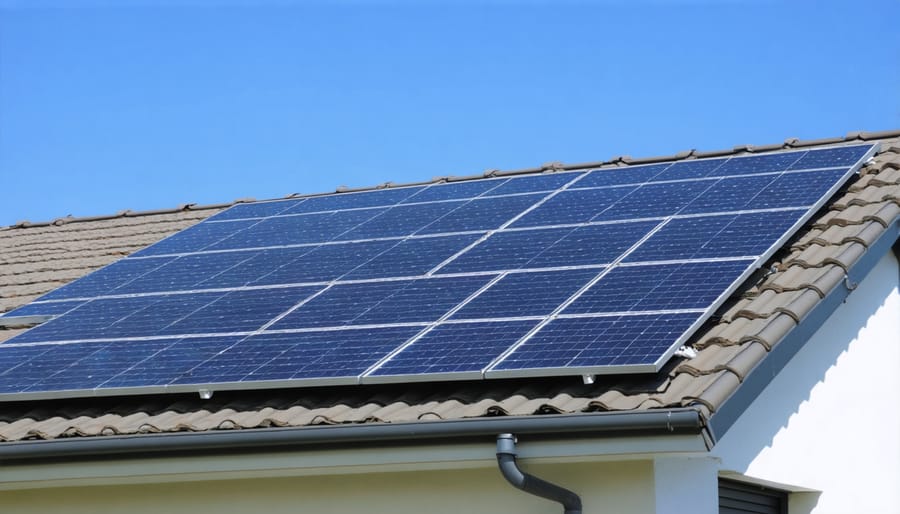
What Does 5kW Actually Mean?
A 5kW solar system’s power rating indicates its maximum theoretical output under ideal conditions. To understand this better, think of it as similar to a car’s horsepower rating – it represents peak performance capability. In practice, your system’s actual energy production will vary throughout the day and across seasons. For those new to residential solar power basics, this means a 5kW system can generate up to 5,000 watts of electricity at any given moment when operating at full capacity.
On average, a 5kW system typically produces between 15-25 kilowatt-hours (kWh) of electricity per day, depending on your location, weather conditions, and panel orientation. This translates to approximately 400-600 kWh per month, which is enough to cover the energy needs of many average-sized homes. Remember that actual production will be higher during sunny summer months and lower during cloudy winter days, making it important to consider your local climate when evaluating system performance.
Typical Home Coverage
A 5kW solar system typically provides enough power to meet the energy needs of an average-sized home consuming between 350 and 850 kilowatt-hours (kWh) per month. This system size is particularly well-suited for households with 3-4 bedrooms, where daily electricity usage includes running essential appliances like refrigerators, washing machines, and air conditioning units.
In sunny conditions, a 5kW system can generate between 16-20 kWh per day, or approximately 6,000-8,000 kWh annually. This output generally covers 70-100% of household electricity needs, depending on your family’s consumption patterns and local climate conditions.
To put this in perspective, a 5kW system can simultaneously power multiple household devices, including:
– A full-sized refrigerator (150-200 watts)
– Central air conditioning (3,500 watts)
– Washing machine (500 watts)
– LED lighting throughout the house (200 watts)
– Various electronics and small appliances (500-1,000 watts)
For most families, this capacity provides a good balance between initial investment and energy independence, making it one of the most popular choices for residential solar installations.
Smart Home Integration Features
Energy Monitoring Systems
Modern smart solar monitoring systems are revolutionizing how homeowners interact with their 5kW solar installations. These user-friendly platforms provide real-time insights into your system’s performance through convenient smartphone apps or web portals, putting control right at your fingertips.
With these monitoring solutions, you can track your daily energy production, monitor consumption patterns, and view historical data to understand your system’s efficiency. Many platforms offer intuitive dashboards that display energy generation in easy-to-understand graphics, helping you optimize your household energy usage.
Key features typically include automated alerts for system issues, production forecasts based on weather data, and detailed savings calculations. You can easily see how much energy you’re sending back to the grid versus consuming, and some systems even provide recommendations for the best times to run energy-intensive appliances.
Most modern monitoring systems also integrate with home automation platforms, allowing you to schedule appliance usage when solar production is at its peak. This smart functionality helps maximize your solar investment by ensuring you’re using solar power when it’s most abundant.
The ability to access this information remotely gives you peace of mind and helps you make informed decisions about your energy consumption, ultimately leading to greater savings and system efficiency.
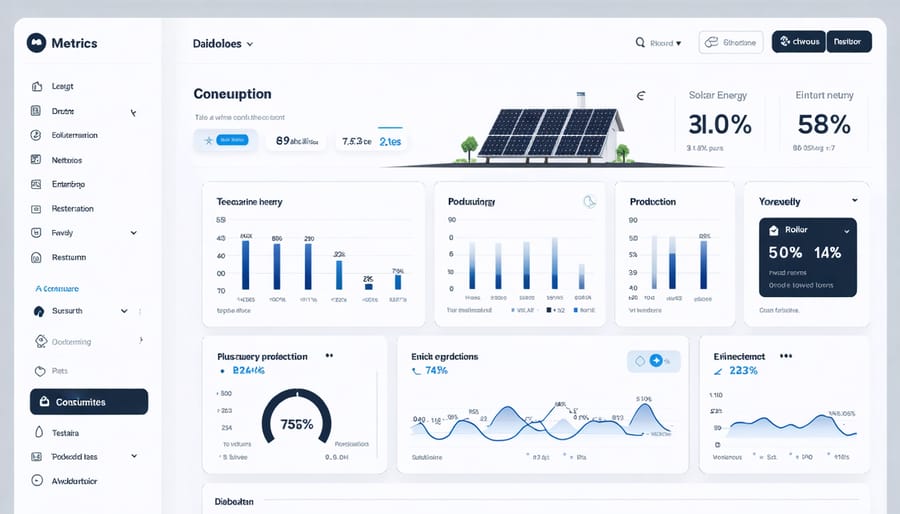
Automated Energy Management
Modern 5kW solar systems come equipped with sophisticated intelligent energy management features that maximize your system’s efficiency. These smart capabilities allow your solar setup to automatically adjust energy distribution based on your household’s consumption patterns and peak usage times.
With automated scheduling, you can program your high-energy appliances to run during peak solar production hours, typically between 10 AM and 2 PM. This ensures you’re making the most of your solar generation rather than drawing from the grid. Smart inverters can also prioritize storing excess energy in batteries during sunny periods for use during evening hours or cloudy days.
Many systems now include mobile apps that provide real-time monitoring and control. You can track your energy production, adjust settings remotely, and receive alerts about system performance. The software can even learn from your usage patterns to optimize energy distribution automatically, ensuring you’re always getting the best return on your solar investment.
Weather-adaptive features allow your system to prepare for upcoming weather changes. For instance, if rain is forecast, the system might automatically increase battery charging during available sunny periods. This proactive approach helps maintain consistent power supply regardless of weather conditions, making your 5kW system more reliable and efficient year-round.
Cost and Savings Analysis
Initial Investment Range
A 5kW solar system typically requires an initial investment ranging from $15,000 to $25,000 before incentives. However, the actual out-of-pocket cost can be significantly lower thanks to various financial incentives and tax breaks. The federal solar tax credit currently allows you to deduct 30% of your total system cost from your federal taxes, potentially saving you $4,500 to $7,500.
State-specific incentives, utility company rebates, and solar renewable energy certificates (SRECs) can further reduce your investment. Some states offer additional tax credits, while local utilities might provide performance-based incentives or net metering programs that increase your system’s value.
Many homeowners find that financing options make solar more accessible. Solar loans typically offer interest rates between 3% and 8%, with terms ranging from 5 to 20 years. Monthly loan payments are often offset by immediate energy bill savings, making the system effectively pay for itself over time.
When calculating your investment, consider that equipment costs have decreased significantly in recent years, while efficiency has improved. Premium panels and inverters might cost more initially but can offer better long-term value through increased energy production and reliability. Installation costs typically account for about 30% of the total investment, varying by location and roof complexity.
Most homeowners recover their initial investment within 5 to 8 years through energy savings, making a 5kW system an attractive long-term investment in your home’s value and energy independence.
Long-term Savings Calculator
Understanding the financial benefits of a 5kW solar system can help you make an informed decision about your investment. Our solar savings calculator takes into account your current electricity rates, average daily consumption, and local solar production factors to provide a clear picture of potential energy bill savings with 5kW systems.
On average, homeowners can expect to reduce their monthly electricity bills by 50-70% with a properly sized 5kW system. Based on current national electricity rates, this typically translates to annual savings between $800 and $1,500, depending on your location and energy usage patterns.
The initial investment for a 5kW system generally ranges from $15,000 to $20,000 before incentives. However, with federal tax credits, state rebates, and local incentives, your out-of-pocket costs could be reduced by 30-50%. Most homeowners achieve complete return on investment within 5-7 years.
Long-term savings are even more impressive. Over a 25-year period (the typical warranty period for solar panels), you could save anywhere from $20,000 to $35,000 on electricity costs. This calculation factors in modest energy price increases and slight system degradation over time. Additionally, your home’s value typically increases by 3-4% with the addition of solar panels, providing immediate equity gains.
Remember to factor in net metering benefits and potential income from selling excess power back to the grid when calculating your total savings potential.
Installation and Maintenance
Space Requirements
A 5kW solar system typically requires between 300-400 square feet of unobstructed roof space, depending on the specific panels chosen and their efficiency ratings. For optimal performance, your roof should ideally face south in the Northern Hemisphere, though southeast and southwest orientations can still work well with only a minor reduction in energy production.
The panels need to be installed at an angle matching your latitude for maximum sunlight exposure, usually between 30-45 degrees in most U.S. locations. Your roof should be free from shade caused by trees, neighboring buildings, or chimneys, particularly during peak sunlight hours (10 AM to 2 PM).
When planning your installation, consider future needs too. It’s wise to leave some additional space for system expansion or maintenance access. If your roof isn’t ideal, ground-mounted systems are an alternative, though they require yard space and proper zoning clearance. Remember that panel efficiency continues to improve, so newer models might require less space while delivering the same power output.
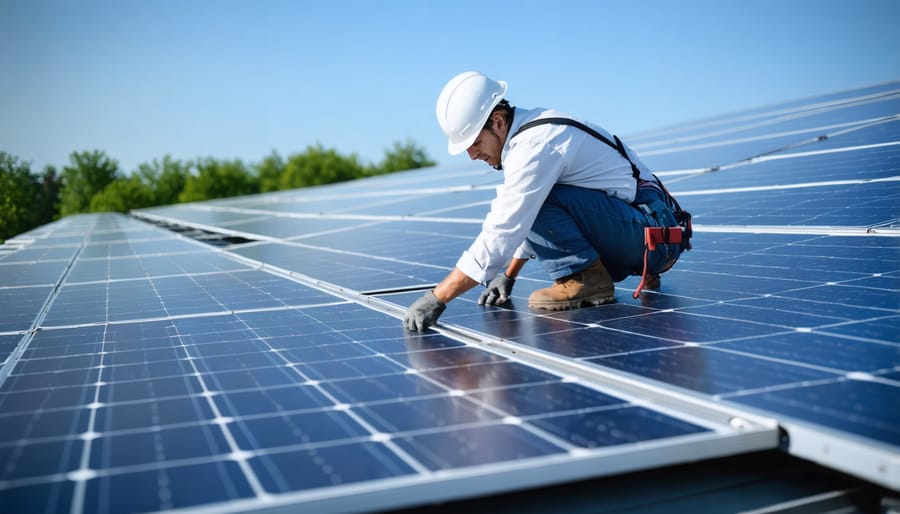
Professional Installation Process
The installation of a 5kW solar system typically takes 2-3 days and involves several carefully planned steps carried out by certified professionals. The process begins with a detailed site assessment, where installers evaluate your roof’s condition, angle, and structural integrity to determine the optimal panel placement.
On installation day, the team starts by setting up safety equipment and preparing the roof surface. They’ll install mounting hardware and rails, ensuring proper waterproofing at all attachment points. Next, the solar panels are carefully lifted onto the roof and secured to the mounting system, typically taking about 4-6 hours.
The electrical work follows, with installers connecting the panels in series and running conduit to house the wiring. They’ll mount the inverter in a cool, accessible location, usually near your main electrical panel. The team then installs the necessary safety disconnects and monitoring system.
Final connections to your home’s electrical system are made by a licensed electrician, who ensures everything meets local building codes. The installation concludes with system testing and commissioning, where technicians verify all components are working correctly.
After installation, you’ll need to schedule a final inspection with local authorities to receive permission to operate (PTO). Most installers handle this paperwork and coordinate with inspectors on your behalf, making the process hassle-free for homeowners.
Maintenance Schedule
Regular maintenance ensures your 5kW solar system performs optimally for years to come. Start with monthly visual inspections of your solar panels for dust, leaves, or bird droppings. A simple rinse with a garden hose during cooler morning hours is usually sufficient for cleaning.
Every three months, check your system’s performance metrics through your monitoring app or device to spot any unusual drops in energy production. Review the inverter display for error messages and ensure all mounting hardware remains secure.
Schedule professional inspections annually, ideally before winter. A qualified technician will check electrical connections, inspect the inverter’s functionality, and verify the mounting system’s integrity. They’ll also test the system’s safety features and calibrate monitoring equipment if needed.
After severe weather events, conduct additional visual inspections for any damage. Keep trees near your panels trimmed to prevent shading and debris accumulation. Most manufacturers recommend replacing the inverter once every 10-15 years, while the panels themselves can last 25-30 years with proper care.
Remember to keep maintenance records for warranty purposes and optimal system performance tracking.
A 5kW solar system represents an excellent investment in your home’s future and the environment. By harnessing clean, renewable energy, you’ll significantly reduce your monthly electricity bills while increasing your property value. The system’s ability to generate approximately 20-25 kWh of electricity daily makes it an ideal choice for most average-sized households, providing a perfect balance between power generation and cost-effectiveness.
The benefits extend far beyond just financial savings. You’ll be reducing your carbon footprint substantially, potentially eliminating up to 4 tons of carbon emissions annually. With federal tax incentives, state rebates, and various financing options available, there’s never been a better time to make the switch to solar power.
Modern 5kW systems are more efficient and reliable than ever before, requiring minimal maintenance while offering decades of dependable performance. With smart monitoring capabilities and seamless grid integration, you’ll have complete control over your home’s energy production and consumption.
Don’t wait to start your solar journey. By investing in a 5kW solar system today, you’re not just choosing energy independence – you’re making a conscious decision to contribute to a more sustainable future while enjoying immediate and long-term financial benefits. Contact a qualified solar installer to assess your home’s potential and take the first step toward clean, renewable energy.


